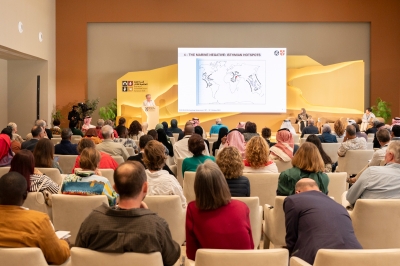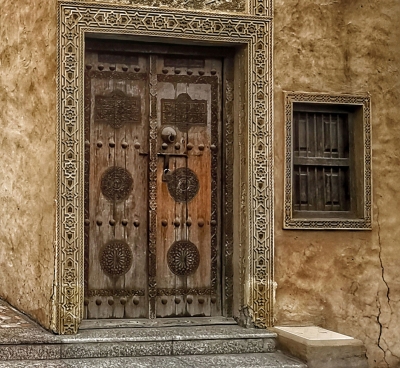
The National Olympiad for Scientific Creativity is an annual competitive scientific event targeting general education students in the Kingdom of Saudi Arabia at the middle and high school levels. The competition spans twenty-one scientific fields, where students compete by presenting innovative or developmental individual projects that adhere to scientific methodology controls. A specialized judging committee evaluates these projects, and it qualifies winners to represent the Kingdom in the International Science and Engineering Fair "ISEF", one of the major scientific exhibitions.
The Olympiad was launched in 2007, organized by King Abdulaziz and His Companions Foundation for Giftedness and Creativity "Mawhiba" and supervised by the Ministry of Education. From its inception until 2021, more than 655,000 male and female students have participated in the event.
The National Olympiad for Scientific Creativity provides an environment that supports and encourages students to innovate and produce scientific work, contributing to the economic growth of the Kingdom and achieving one of the pillars of Saudi Vision 2030: a thriving economy.
National Olympiad for Scientific Creativity objectives
The National Olympiad for Scientific Creativity aims to create a competitive environment that encourages students to engage in scientific research, develop their research skills, discover their talents and scientific interests, and guide them in finding solutions to tackle problems and support their implementation. Additionally, it seeks to raise students' awareness of the impact of research and scientific production on the Kingdom's economy and prosperity and prepare them to represent the Kingdom and compete globally in knowledge production.
Fields participating in the National Olympiad for Scientific Creativity
The National Olympiad for Scientific Creativity allows participation in twenty-one fields in science, technology, and engineering, which are mathematics, materials science, microbiology, plant sciences, behavioral and social sciences, computational biology and bioinformatics, systems software, chemistry, biochemistry, animal sciences, earth and environmental sciences, robotics and smart devices, environmental engineering, physics and astronomy, mechanical engineering, biomedical engineering, energy, cellular and molecular biology, biomedical and health sciences, embedded systems, and translational medical science.
Phases of project approval in the National Olympiad for Scientific Creativity
The projects participating in the National Olympiad for Scientific Creativity go through six stages. The first stage begins with the registration of student data, followed by training lectures to guide students to develop their projects. The third stage involves the registration of the participating projects. In the fourth stage, electronic judging takes place, and the names of the candidates for the central exhibitions are announced, with project models uploaded to the website. The fifth stage features exhibitions and workshops, where the names of the qualifiers are announced, and project information is updated. In the final stage, the Ibdaa Science and Engineering Fair is held, and the winning students are supported with preparatory workshops to represent the Kingdom and participate in the International Science and Engineering Fair "ISEF".
National Olympiad for Scientific Creativity achievements
Over fifteen years since its inception, the National Olympiad for Scientific Creativity has achieved participation of more than 655,000 male and female students. About 993 of these students have received major awards, and six students were honored by the National Aeronautics and Space Administration (NASA), which named asteroids after them in recognition of their efforts and scientific achievements.
Related quizzes

